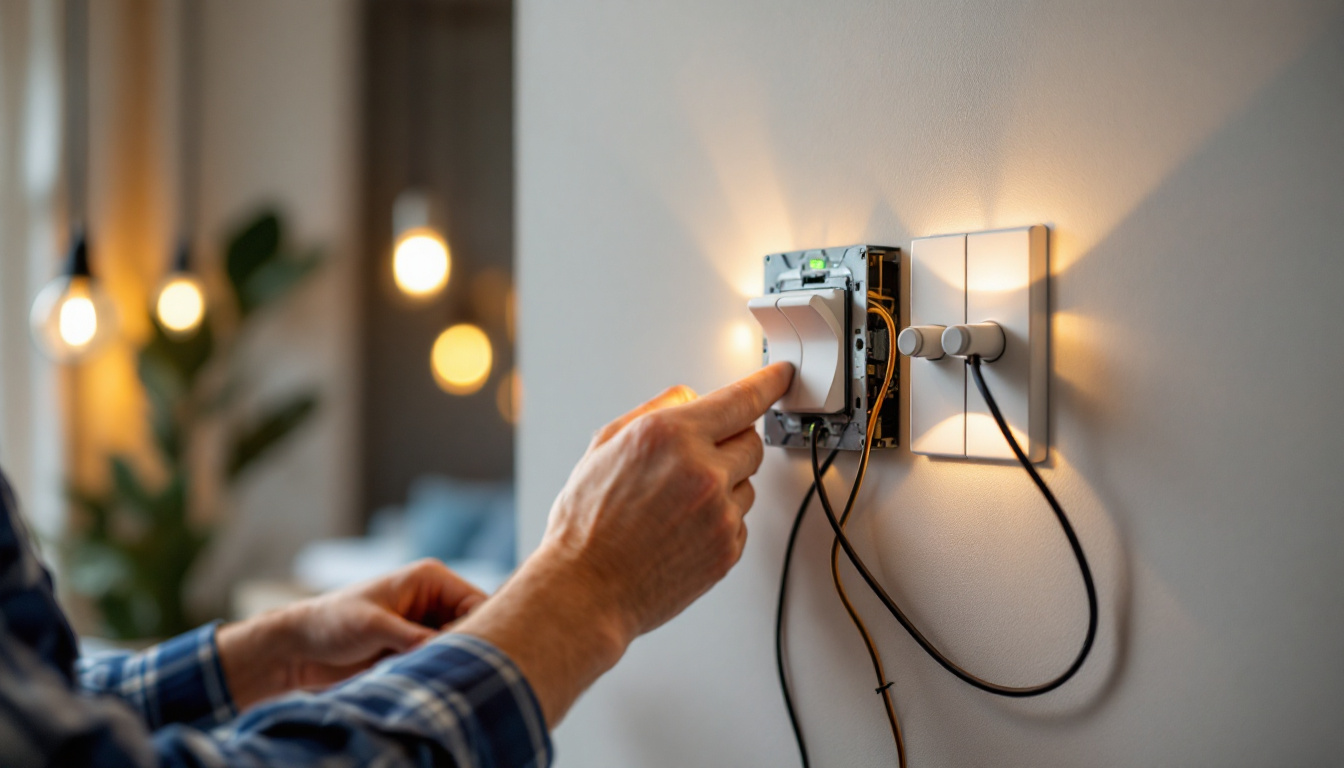
As the demand for aesthetically pleasing and functional outdoor spaces continues to grow, barn lighting has emerged as a popular choice for both residential and commercial properties. However, designing and installing exterior barn lighting comes with its own set of challenges. This guide aims to help lighting contractors navigate potential pitfalls while ensuring that their clients receive optimal lighting solutions.
Exterior barn lighting serves multiple purposes, from enhancing the visual appeal of a property to providing essential safety and security features. Proper lighting can transform a barn into a welcoming space, making it suitable for various activities such as events, gatherings, or even as a workspace. The right lighting can create an inviting atmosphere that encourages people to linger and enjoy the surroundings, whether it’s a rustic wedding reception or a community gathering.
Moreover, effective barn lighting can deter unwanted visitors and enhance the safety of the area by illuminating pathways and entrances. Understanding these benefits is crucial for lighting contractors, as it allows them to present well-rounded proposals to their clients. Additionally, well-lit barns can serve as landmarks in rural areas, guiding visitors and enhancing the overall charm of the landscape, especially during the twilight hours when the soft glow of lights contrasts beautifully with the darkening sky.
When planning barn lighting, several design considerations must be taken into account. The layout of the barn, the surrounding landscape, and the intended use of the space all play significant roles in determining the optimal lighting solutions. A well-thought-out design not only enhances functionality but also complements the barn’s architectural features. For instance, if the barn has unique structural elements like exposed beams or vintage doors, lighting can be strategically placed to highlight these characteristics, adding to the overall aesthetic appeal.
Lighting contractors should consider the color temperature of the lights, as warmer tones can create a cozy atmosphere, while cooler tones provide a more modern feel. Additionally, the placement of fixtures is vital; strategically positioned lights can minimize shadows and highlight key areas. Incorporating dimmable options can also offer flexibility, allowing users to adjust the brightness according to the occasion, whether it’s a lively event or a quiet evening gathering. Furthermore, integrating smart lighting systems can enhance convenience, enabling users to control their barn lighting remotely or set schedules for automatic illumination.
There are various types of lighting fixtures suitable for barn exteriors, each offering unique benefits. Wall-mounted sconces can provide ambient lighting while adding character to the barn’s exterior. Floodlights are ideal for illuminating larger areas, ensuring safety and visibility during nighttime hours. These powerful fixtures can also be equipped with motion sensors, providing an extra layer of security by activating when movement is detected.
Furthermore, pendant lights can be used to create focal points in outdoor seating areas, while string lights offer a whimsical touch for events. These decorative lights can be draped across beams or hung between trees, creating a magical atmosphere that enhances the overall experience. Understanding the different types of fixtures available allows contractors to tailor their recommendations to meet the specific needs of their clients. Additionally, energy-efficient options, such as LED fixtures, can provide long-lasting illumination while reducing electricity costs, making them an attractive choice for environmentally conscious property owners.
Despite the many advantages of barn lighting, several common pitfalls can hinder the effectiveness of a lighting project. Awareness of these challenges can help contractors avoid costly mistakes and ensure client satisfaction.
One of the most frequent mistakes in barn lighting design is over-illumination. While it may be tempting to install bright lights to ensure visibility, excessive lighting can create glare and diminish the overall aesthetic appeal. It is essential to strike a balance between functionality and ambiance.
Lighting contractors should conduct a thorough assessment of the space and consider using dimmable fixtures or multiple layers of lighting to achieve the desired effect without overwhelming the area. This approach not only enhances the visual appeal but also promotes energy efficiency.
In an age where sustainability is a priority, neglecting energy efficiency can be a significant oversight. Many contractors may default to traditional incandescent bulbs, which consume more energy and have a shorter lifespan compared to modern LED options. LED lights are not only energy-efficient but also provide a longer-lasting solution.
Contractors should educate their clients about the benefits of energy-efficient lighting, including potential cost savings on electricity bills and reduced maintenance requirements. Incorporating smart lighting systems can further enhance energy efficiency by allowing users to control their lighting remotely or set schedules.
Every region has specific regulations regarding outdoor lighting, particularly concerning light pollution and safety standards. Ignoring these regulations can lead to fines and project delays. Contractors must familiarize themselves with local codes and ensure that their designs comply with all requirements.
Additionally, it is advisable to consult with local authorities or lighting professionals to gain insights into best practices for outdoor lighting. This proactive approach can prevent complications and enhance the contractor’s reputation for reliability and professionalism.
Selecting the appropriate fixtures is crucial for achieving the desired lighting effect. The right choice not only enhances the barn’s aesthetic but also ensures functionality and safety. Here are some key factors to consider when choosing fixtures.
Outdoor lighting fixtures must withstand various weather conditions, from rain and snow to extreme heat and humidity. Therefore, choosing materials that offer durability and resistance to corrosion is essential. Fixtures made from stainless steel, aluminum, or high-quality plastic are often recommended for their longevity.
Additionally, contractors should consider the finish of the fixtures. A powder-coated finish can provide extra protection against the elements, ensuring that the lights maintain their appearance over time. Investing in durable materials can lead to fewer replacements and lower maintenance costs for clients.
The style of the lighting fixtures should complement the barn’s architecture and the surrounding landscape. Rustic designs may be more suitable for traditional barns, while sleek, modern fixtures can enhance contemporary structures. Offering a variety of styles allows clients to choose fixtures that resonate with their personal taste and the overall design vision.
Moreover, incorporating decorative elements, such as lantern-style fixtures or vintage-inspired designs, can add character and charm to the barn’s exterior. Lighting contractors should present clients with a range of options to ensure they find the perfect fit for their project.
The distribution of light and the beam angle of fixtures are critical factors in achieving effective illumination. Spotlights provide focused lighting for specific areas, while floodlights offer broader coverage. Understanding the intended use of each area will guide contractors in selecting the appropriate type of lighting.
Additionally, the beam angle can affect how light is spread across surfaces. A narrow beam angle may be suitable for highlighting architectural features, while a wider beam angle is ideal for general illumination. By considering light distribution, contractors can create a well-lit environment that meets the needs of their clients.
Proper installation is vital for ensuring the longevity and effectiveness of barn lighting. Following best practices can help contractors avoid common issues and deliver high-quality results.
Before installation begins, a detailed lighting layout should be created. This layout should indicate the placement of fixtures, the type of lighting to be used, and any necessary wiring or electrical considerations. A well-planned layout minimizes the risk of errors during installation and ensures that all areas are adequately illuminated.
Contractors should also consider the height at which fixtures will be installed. Mounting lights too high can reduce their effectiveness, while lights placed too low may create shadows or obstruct pathways. Finding the right height is crucial for achieving a balanced lighting design.
Electrical safety is paramount when installing outdoor lighting. Contractors must ensure that all wiring is properly insulated and protected from the elements. Using weatherproof junction boxes and conduit can help safeguard electrical connections from moisture and damage.
Additionally, it is essential to follow local electrical codes and regulations during installation. This not only ensures safety but also protects the contractor from liability issues. Engaging a licensed electrician for complex electrical work can further enhance safety and compliance.
After installation, testing the lighting system is crucial to ensure that it functions as intended. Contractors should check for any areas that may require additional illumination or adjustments to fixture placement. This step allows for fine-tuning the lighting design to achieve the desired effect.
Encouraging clients to provide feedback during this process can also lead to valuable insights. Adjustments can be made based on the client’s preferences, ensuring that the final result aligns with their vision and expectations.
Once the barn lighting is installed, ongoing maintenance is essential for ensuring its longevity and functionality. Educating clients about proper upkeep can enhance their satisfaction and prolong the life of the lighting system.
Conducting regular inspections of the lighting system can help identify any issues before they become significant problems. Contractors should advise clients to check for burnt-out bulbs, damaged fixtures, or any signs of wear and tear. Early detection allows for timely repairs, preventing larger issues down the line.
Additionally, cleaning fixtures periodically can improve their performance and appearance. Dust, dirt, and debris can accumulate on fixtures, diminishing their effectiveness. Providing clients with simple cleaning instructions can empower them to maintain their lighting system effectively.
Seasonal changes can impact the performance of outdoor lighting. For instance, during winter months, snow accumulation can obstruct light fixtures, while summer foliage may block light from reaching certain areas. Contractors should recommend seasonal adjustments to clients, such as repositioning fixtures or adjusting timers to accommodate changing daylight hours.
By staying proactive with seasonal maintenance, clients can ensure that their barn lighting remains effective year-round, enhancing both safety and aesthetics.
In summary, barn lighting plays a vital role in enhancing the functionality and aesthetics of outdoor spaces. By understanding the importance of proper design, avoiding common pitfalls, and following best practices for installation and maintenance, lighting contractors can deliver exceptional results for their clients.
As the demand for outdoor lighting continues to grow, staying informed about the latest trends and technologies will further enhance a contractor’s ability to provide high-quality solutions. By prioritizing client education and satisfaction, contractors can build lasting relationships and establish themselves as trusted professionals in the field of barn lighting.
Ready to elevate your barn lighting projects with the finest selection of spec-grade lighting products? Look no further than LumenWholesale. We provide lighting contractors with exceptional quality and value, ensuring every outdoor space shines with reliability and style. Benefit from our wholesale prices, extensive selection, and the convenience of free shipping on bulk orders. Don’t let inflated markups dim your project’s potential. Choose LumenWholesale for your lighting needs and experience the ultimate in quality, affordability, and convenience. Wholesale Lighting at the Best Value is just a click away.

Discover the essential guide for lighting contractors on selecting the perfect motion detectors.

Discover how mastering the three-way switch can give lighting contractors a competitive edge in the industry.

Discover how shatter resistant light bulbs can revolutionize your lighting projects by enhancing safety, reducing maintenance, and boosting overall efficiency.

Discover how GE Lamps can transform your business strategy and help you secure more lighting contracts.